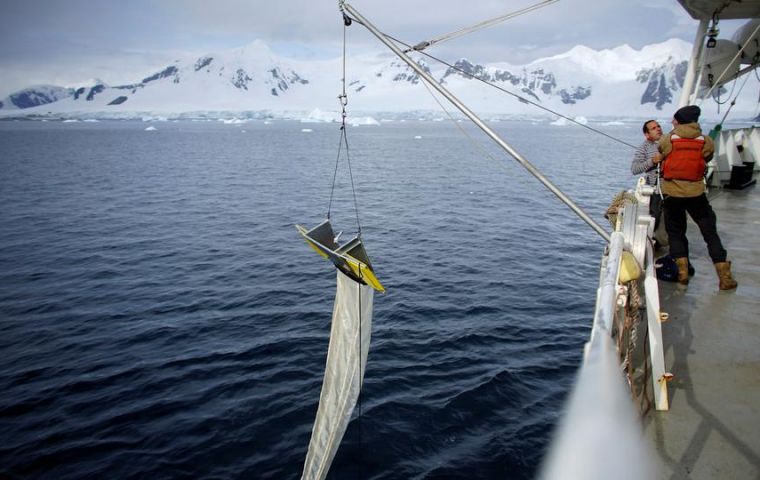MercoPress. South Atlantic News Agency
Micro plastics pollution reaches Antarctica: found in land based food systems
 The paper published in the journal Biology Letters warns this could also be a new stressor for fragile polar ecosystems already facing threats from climate change.
The paper published in the journal Biology Letters warns this could also be a new stressor for fragile polar ecosystems already facing threats from climate change. Scientists have found bits of polystyrene in the guts of tiny, soil-dwelling organisms in the Antarctic, raising concern that micro-plastics pollution has already “deeply” entered the world's most remote land-based food systems.
While the infiltration of micro plastics throughout the oceans is well-known, researchers said their findings provided the first evidence of contamination in the Antarctic terrestrial food chain.
“Plastics have therefore entered even some of the most remote soil food webs on the planet, with potential risks for the whole biota and ecosystems,” said authors of the study, published on Wednesday in the journal Biology Letters.
They warned this could also be a new stressor for fragile polar ecosystems already facing threats from climate change.
Scientists focused on collembolan Cryptopygus antarcticus - small organisms commonly known as springtails that can jump in a similar way to fleas, although they are not classed as insects.
They are among the few organisms adapted to survive in the harsh Antarctic conditions and are “often the dominant species” in the few areas of the region not covered by ice, the study said. They mainly eat micro-algae and lichens.
Researchers, led by scientists from Italy's University of Siena, collected the creatures from a chunk of polystyrene foam covered in a green layer of micro-algae, moss and lichens on King George Island in the South Shetland Islands.
Human activity in the area including scientific research stations, airport and military facilities, and tourism have acted to make it “one of the most contaminated regions of Antarctica”.
By examining the collembola using an imaging technique with infrared and comparing the images to fragments of the polystyrene, the researchers “unequivocally” detected traces of the plastic in their guts.
The authors said they believed the creatures ate the plastic fragments while grazing on their usual food.
Elisa Bergami of the University of Siena said the study showed that plastic pollution is “ubiquitous” and had reached even remote polar regions. “Cryptopygus antarcticus has a key role in the simple Antarctic terrestrial food webs,” she said.
Researchers also raised concerns about styrofoam, because its porous structure could encourage the formation of moss and other growth, thereby attracting organisms.
In separate research, two different groups of scientists from China and the US have reported discovering that manmade mercury pollution has reached the bottom of the deepest part of the ocean, the Marianas Trench in the Pacific.
The studies, reported at the Goldschmidt Geochemistry conference this week, found both manmade and natural methylmercury - a toxic form of mercury - in fish and crustaceans in the trench.
Mercury, which can become concentrated in animals towards the top of the marine food chain, is poisonous at high levels and can harm a developing fetus.




Top Comments
Disclaimer & comment rulesCommenting for this story is now closed.
If you have a Facebook account, become a fan and comment on our Facebook Page!